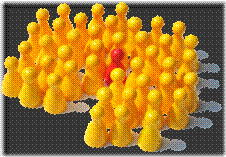Web Visitors to Citizens - The Web Resident
part 2 of a my concept of the transition of web visitor to resident
The resident isn't going to a web site to simply consume information. They go there to participate.
Access:
Access to a web site as a result of a notification, some participative need (e.g. a conversation thread or response), and is unlikely to be reached by chance. The resident shares specific and detailed information common to like-minded user types and groups.
Expectations:
The resident expects that data and services will always be available. Information will be presently in a timely fashion and personalized to them. There will be no need to re-key data or to follow through multiple screens that lead to a dead-end. Communication is a key feature and issues can be raised and resolved quickly.
Behaviour:
The resident will seek out and interact with people. They will use collective expertise and search for content they cannot find. New emergent forms of communication include pervasive wikis, blogs and RSS feeds, corporate profiles. Social networking tools, as well as presence, instant messaging and web conferencing are the norm.
The resident typically uses the site as a platform for other activities. They invite, encourage and attract others to participate and they provide feedback.
Technology:
Generic: DHTML, Javascript
Microsoft: MOSS, live, AJAX.ASP.NET, Silverlight, AdCenter, IPTV, XBOX Live, Office communicator
Example:
Myspace is in ASP.Net.
Facebook - Both of the next generation web 2.0 platforms are a mix of Linux and windows with both platforms providing complementary services to the alternate platform.
Rationale
It is worth considering that in a recent study 25% of users would leave their bank if another bank provided richer services. One would hazard a guess that this number has been growing steeply since the advent of web 2.0 web sites.
One would benefit by providing a customer centric view and encouraging feedback.
